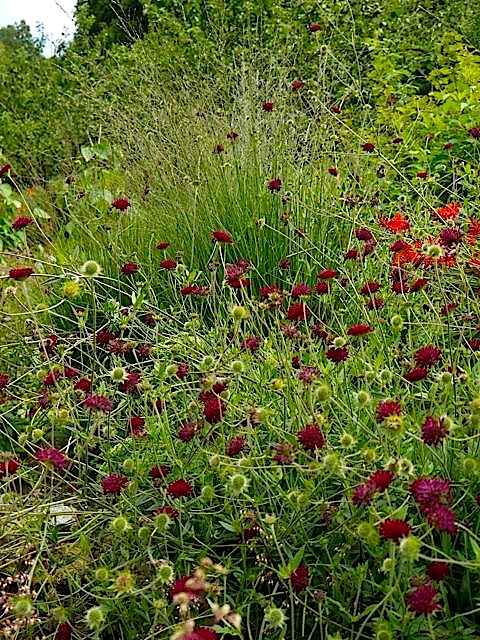As another week hoves into view, time to reflect on an eventful weekend. International Rescue was out in force on Saturday morning when a young pipstrelle bat contrived to appear on the lounge floor. After some hasty Googling of bat first aid, we gave said flittermouse a drink of water and held it up to one of the gaps between cottage wall and barge boards, which we know is a regular entrance and exit for the maternal roost of up to 180 pipistrelles in our roof space. With much squeaking – that we anthropomorphically attributed to unbridled pleasure and profound gratitude in equal measure – the poor little mite scrambled through the tiny hole, none the worse we hope for its unscheduled encounter with a carpet. Sorry, no photos; just a warm glow of mission accomplished – F.A.B.
We only made it as far as lunchtime before our search-and-rescue forces were deployed for a second time. Two holidaymakers (shall we call them, for want of a more perjorative noun) faithfully followed their satnav up our tiny narrow lane, past all those peculiar signs saying "UNSUITABLE FOR CARAVANS" and towing... a caravan. What fun! It all went pear shaped when they finally ground to a halt on the 1-in-4 S-bend just past our garden. Either the caravan came unhitched, or they unwisely unfastened it themselves (we never did find out which). Whatever the circumstances, the irresistible force of gravity meant that the caravan hurtled enthusiastically down hill until it encountered a drystone wall at the bottom. A driver heading in the opposite direction, and with his head very much screwed on, unlike exhibits A & B, calmly took control, and with a bit of elbow grease and a nasty smell from the clutch of the happy campers' car, we eventually had them on their way, back down the valley, the drystone wall having come off worse and the caravan suffering no more than a light crumple.
After all that, we had little choice in the afternoon but to treat our physical and emotional exhaustion in the traditional Devon way...
Oh, and we still managed to get out in the garden, particularly on Sunday, when Saturday's rainy gloom gave way to heavy showers interspersed with dazzling sunny spells. Wildlife highlights included Common Blue (first of the year for us, after a number of very poor years), Red Admiral, Painted Lady, Ringlet, Meadow Brown, Speckled Wood, Large White, Green-veined White and Silver-washed Fritillary butterflies, lots of Common Darter dragonflies around the ponds, and a mating pair of Southern Hawker dragonflies.
Hydrangea quercifolia 'Snowflake' (which incidentally provides the backdrop to the the scones, above) is looking great, as are the nearby clumps of
Penstemon 'Raven', the flared magenta trumpets of which form the perfect landing platform for bumble-bees.
 |
| Red Admiral on Buddleja davidii 'Royal Red' |
 |
| Hydrangea quercifolia 'Snowflake' |
 |
| Penstemon 'Raven' |
 In
common with other selections of P.
paniculata they are highly scented; never more so than on a warm,
still evening, when I have been stopped in my tracks as I try to pin
down the exact source of the at-once familiar yet strangely exotic
fragrance.
In
common with other selections of P.
paniculata they are highly scented; never more so than on a warm,
still evening, when I have been stopped in my tracks as I try to pin
down the exact source of the at-once familiar yet strangely exotic
fragrance.
















































